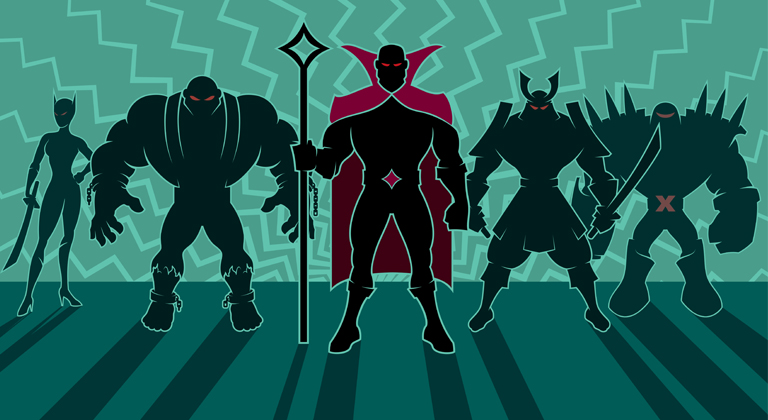What can writers learn from the works of Andy Weir?
Certain authors create stories that captivate readers, leaving an indelible mark on the literary landscape. Andy Weir, known best for his self-published hit The Martian, is one such writer. His ability to weave compelling narratives set against the backdrop of space exploration has garnered widespread acclaim, and it leaves other authors curious – what secrets can be gleaned from Weir’s writings?
Today, Ginger takes a deep dive into the writings of Weir in an attempt to uncover the elements that make his work resonate with readers. By dissecting his storytelling techniques, we can all learn to be better writers ourselves, and create works that will be as “out of this world” as The Martian.
A few weeks ago, I wrote a blog post about the only four ways to consistently sell books, and one of the examples of a successful self-published author using one of these techniques was Andy Weir, the author behind acclaimed science fiction novels like The Martian and Artemis.
Since The Martian first landed on the digital bookshelves in 2011, Andy Weir has gone on to captivate millions of readers with his gripping storytelling and scientifically accurate narratives – and reach an audience beyond the page with a brilliant cinematic adaptation of his first novel.
But beyond the thrilling plots and charismatic characters that characterize his books, there are invaluable lessons writers can glean from studying how Andy Weir writes. In this blog post, I’ll try to provide examples from his books that illustrate the important lessons you can learn from this self-confessed “lifelong space nerd.”
The Art of Scientific Accuracy
One of the standout features of Andy Weir’s writing is his unwavering commitment to scientific accuracy. His background in computer science shines through in every word he writes, but what makes his words so compelling is the way he is able to present complex scientific concepts in an accessible way. For writers, this underscores not just the importance of research and precision in storytelling, but also the importance of making that research understandable.
In The Martian, for example, our plucky protagonist Mark Watney is stranded on Mars. As he recounts Mark’s story, Weir meticulously uses research to explain each and every way in which Watney uses his scientific knowledge to survive. The accuracy of the science, and the ease in which Weir makes it understandable, adds depth and believability to a narrative that would otherwise be (literally) “out of this world.” It makes the reader feel not just smart enough to understand these complex concepts, but also as if they’re solving problems right alongside our hero.
Crafting Relatable Characters
After initially identifying himself as the first colonist of Mars, and later as a space pirate, we learn in The Martian that Mark Watney has a rich sense of humor as well as a keen mind for science. He’s not just a brilliant astronaut; he’s also funny, resourceful, and vulnerable – all qualities that make him relatable and endearing. Mark is a prime example of how Weir excels at creating relatable and three-dimensional characters that readers instantly start caring about.
When Watney faces life-threatening challenges on Mars, this characterization helps us become emotionally invested in his survival – and it’s a writing technique that aspiring authors can emulate in their own books. Giving characters depth and relatability makes readers really care about their journey – and that’s what turns a book into a real page-turner.
Problem-Solving as Narrative Fuel
Andy Weir’s novels are consistently built around problem-solving narratives. Whether it’s being stuck on Mars, or trapped on a colony on the Moon, Andy Weir’s characters are constantly faced with life-or-death challenges that force them to think critically and find innovative solutions to their problems. This works in the same way a well-written mystery novel does – keeping readers engaged and invested in the story as they slowly learn more and more about what’s happening.
In Artemis, Weir’s second novel, our protagonist Jazz Bashara needs to use her wits to navigate a lunar heist. Weir confronts her with intricate problems to solve that require creative and innovative solutions, testing her to the extreme and inexorably driving the plot forward. Writers can learn a lot from this technique – especially the importance of incorporating challenges their own characters must face, each of which propels the narrative forward and encourages a character’s growth and development.
The Balance of Science and Accessibility
We mentioned Andy Weir’s talent for making complex science accessible to readers earlier in this article, but it’s a technique that I think deserves a callout all of its own. Throughout each of his four full-length novels, Andy Weir has proven himself a master at deftly integrating complex scientific concepts into his stories without overwhelming readers. This balance between technical accuracy and reader accessibility is one of the reasons The Martian became such a breakout self-published hit, and remains a crucial lesson for all writers of science fiction.
In The Martian, Weir seamlessly incorporates accurate scientific explanations for real and relatable problems – and the solutions to those problems. For example, when Mark Watney needs to produce water on Mars, Weir provides a clear and understandable description of the chemical process that can turn hydrogen into water, allowing readers to follow along even if they didn’t take Chemistry 101.
Deconstructing complex ideas and concepts is the key to truly understanding them, and that’s why so many of us feel smarter after reading Weir’s books.
Immersive World-Building
I recently wrote another blog post that praised Andy Weir’s skills as a writer, and that post was specifically about the challenge science fiction authors face when building believable worlds.
Weir’s techniques for creating immersive science fiction settings are definitely worth studying – especially if you write science fiction yourself. Whether it’s the desolate landscape of Mars, or the bustling lunar city of Artemis, the worlds of Weir’s books come vividly to life on the page – sucking us into the story in a completely immersive way. Writers should try to emulate the way Weir uses vivid descriptions and attention to detail to achieve this, because it’s the key to transporting readers into worlds and situations that would otherwise only exist on the page.
In Artemis, for example, Weir paints a vividly believable picture of life on the Moon – right from explaining the economics of this lunar city to the challenges of living in low gravity. If you can seamlessly incorporate the real practicalities of living in your fantasy world, you can begin to build rich, believable environments that enhance the story you’re trying to tell.
Humor as a Narrative Tool
An unexpected but consistent element throughout Weir’s writing is humor. His books are genuinely, laugh-out-loud funny at times – especially when heroes like Mark Watney are facing their toughest challenges.
Humor is a powerful tool in Weir’s writing arsenal. He infuses his narratives with quick wit and a clever turn of phrase even as our heroes face the most dire situations. This not only adds depth to his characters, but also engages readers on an emotional level by juxtapositioning humor with suspense.
A great example of this can be found in The Martian, in which Mark Watney’s humor becomes a coping mechanism he uses to face extended isolation and frequent danger. Writers can learn a lot by using humor in a similar way in their own books. It’s a great way to connect with readers and provide relief in tense moments.
The Power of Research and Revision
Last, but definitely not least, is the power of research – and correcting that research when it changes! Andy Weir’s dedication to research and revision throughout his books serves as a crucial lesson for writers hoping to follow in his footsteps. Throughout The Martian, Artemis, and Project Hail Mary, Weir spends extensive time ensuring the scientific accuracy of his work and has been known to revise his manuscripts diligently when new information becomes available. This commitment explains why even the most cynical scientific minds have embraced Weir as an author, even though he is dedicated to the “fictional” realm of science.
Writers who are inspired by Andy Weir can adopt a similar approach when writing their own books. You don’t have to write about the conquest of space or the colonization of the Moon in order to conduct thorough research of your own, or embrace the importance of revising and editing your books, and it’s an approach that readers really appreciate.
Weir’s journey from self-publishing The Martian as a serialized story on his blog to its eventual blockbuster success demonstrates the value of this persistence and improvement.
Conclusion
Even if you’re not a science fiction author yourself, Andy Weir’s books offer a treasure trove of lessons aspiring writers can learn from. From scientific accuracy to character development, problem-solving narratives to immersive world-building, there’s so much you can learn from his work.
By studying Andy Weir’s novels and applying the insights I’ve outlined above, aspiring authors can elevate their storytelling and find new ways for their writing to resonate with readers in profound and unexpected ways – and that means even if the characters you write about never leave the Earth, the impact of their adventures can still be “out of this world.”












2 Comments